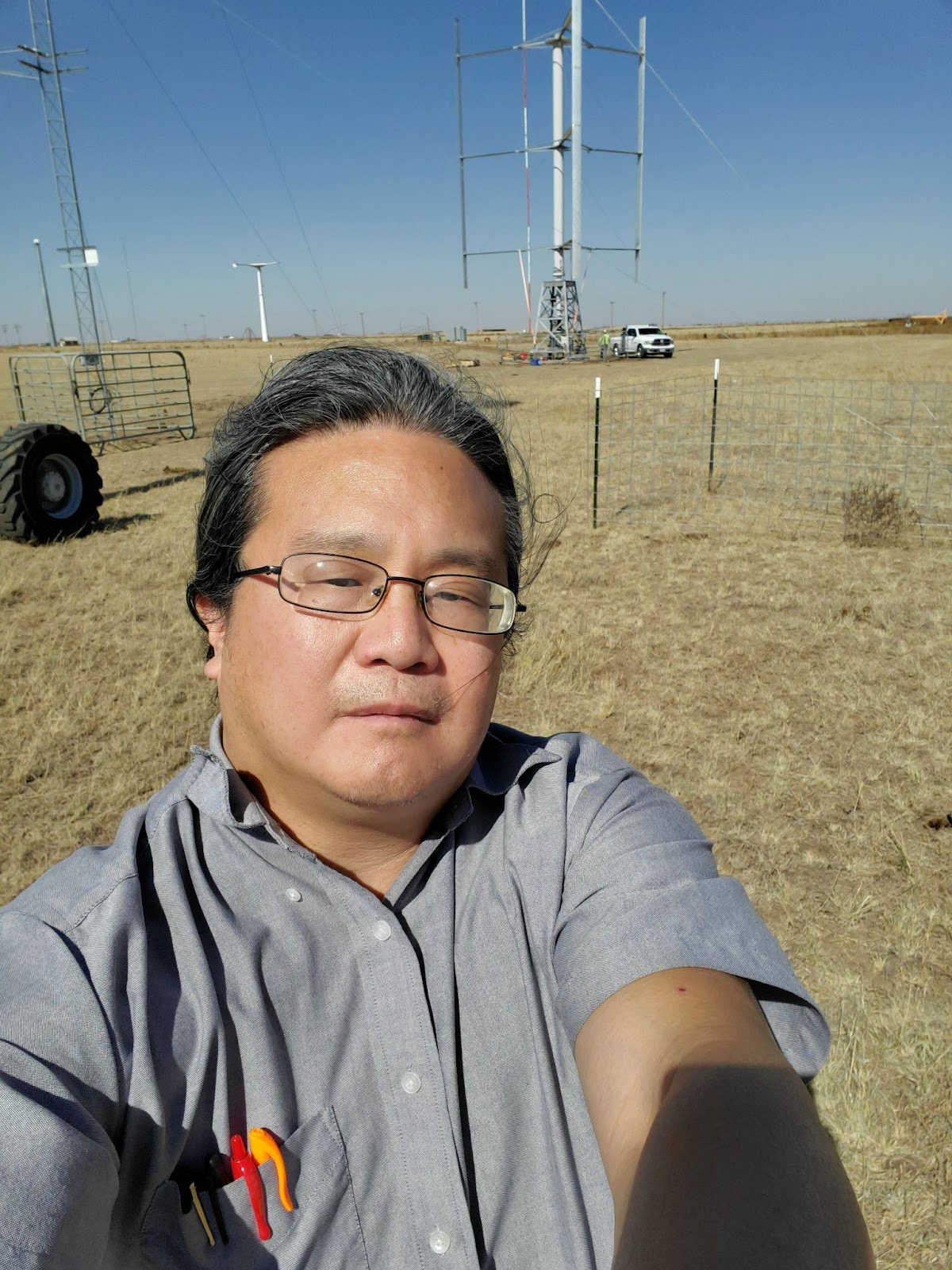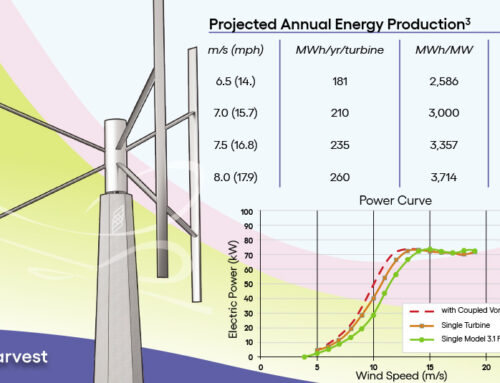Successful VSAM Implementation and Operation Along with Other Significant Milestones Achieved During Recent Model 3.1 Test Phase
Successful VSAM Implementation and Operation Along with Other Significant Milestones Achieved During Recent Model 3.1 Test Phase
 This week we achieved a significant milestone with the successful full-scale test of our proprietary new variable speed control algorithm module (VSAM).
This week we achieved a significant milestone with the successful full-scale test of our proprietary new variable speed control algorithm module (VSAM).
The VSAM automatically adjusts the turbine’s rotational speed as wind speed changes. The VSAM control mode allows the turbine to generate maximum output power at lower wind speeds while limiting power output when high wind speeds could strain the electrical grid connection.
We are delighted to report that our initial VSAM testing was successful and did not require any rework or debugging- it literally worked perfectly the first time it was tested, thus avoiding the usual hundreds of hours of engineering time needed to troubleshoot and debug. Months of fixed speed characterization and test data helped us dial in the control parameters to achieve maximum power production and control stability in variable speed mode. Initial observations of real-time data show a solid match with the output power predicted by our version of Sandia National Lab’s CACTUS aerodynamic model (adapted for our H-type turbine configuration).
Turbine mechanical and operational dynamics in automatic variable speed control mode appear smooth and efficient. We are observing the expected enhanced energy production with torque and power optimization provided by variable speed operation as compared to fixed speed operation. We are also seeing improved power quality characteristics as compared to those observed in fixed speed mode, due to inertial effects associated with varying RPM with wind speed in Region 2 wind speeds. The improvement in power quality was never a goal of VSAM, but it has turned out to be a welcome side effect.
We performed additional tests that confirmed the successful operation of Wind Harvest’s VSAM’s fault detection and shut-down algorithms (by introducing artificial faults) and the functionality of the wind speed cut-in and cut-out algorithms. The cut-in and cut-out modules automatically start up the turbine when the average wind speed is sufficient to generate meaningful power and shut down the turbine when the average wind speed drops too low to generate power. There are similar cut-in and cut-out functions in the VSAM to shut the turbine down in winds too high or gusty to operate the turbine safely, then restart it when such high winds settle back down to a safe speed.
On May 17 and May 19, we ran the turbine in VSAM mode for 12-hour and 24-hour periods, respectively, recording operational data that we will use to optimize VSAM control parameters in all wind profiles. The ultimate objectives of the VSAM and other automatic control modules, besides enabling the maximum possible output power generation in variable wind, are to ensure safe, smooth, and intelligent automatic operation, minimizing bending and torque stresses, minimizing startup and shutdown cycles, minimizing brake pad wear, and to prevent other actions that could cause undue wear and tear on all parts of the machinery.
Test the waters disclaimer page here
Contact: Jen Hoover, jhoover@windharvest.com
Wind Harvest International, Inc. is a California-based renewable energy technology company, founded in 2006. The company makes, sells, and develops projects for its Wind Harvester brand of H-type turbines, the only known product designed to harvest the highly energetic, turbulent wind that blows 15-80 feet above the ground. Wind Harvest’s wholly-owned financial subsidiary Wind Harvest Pilot Project Inc. raises funds and loans it to the parent company.



